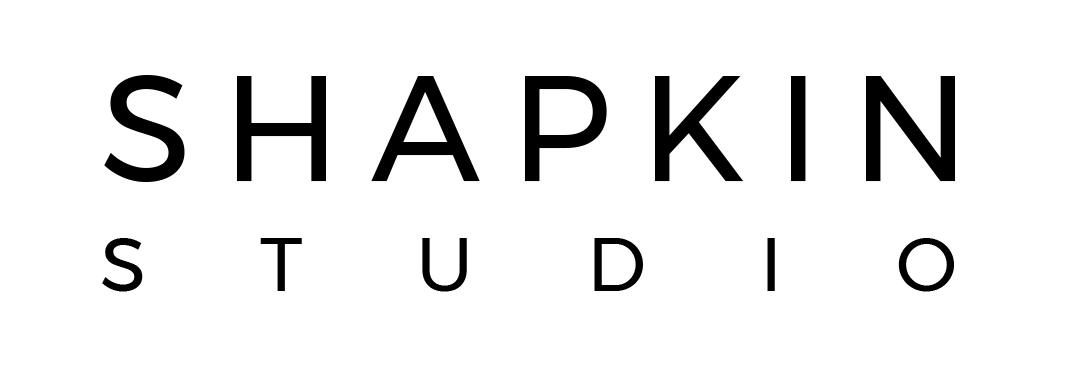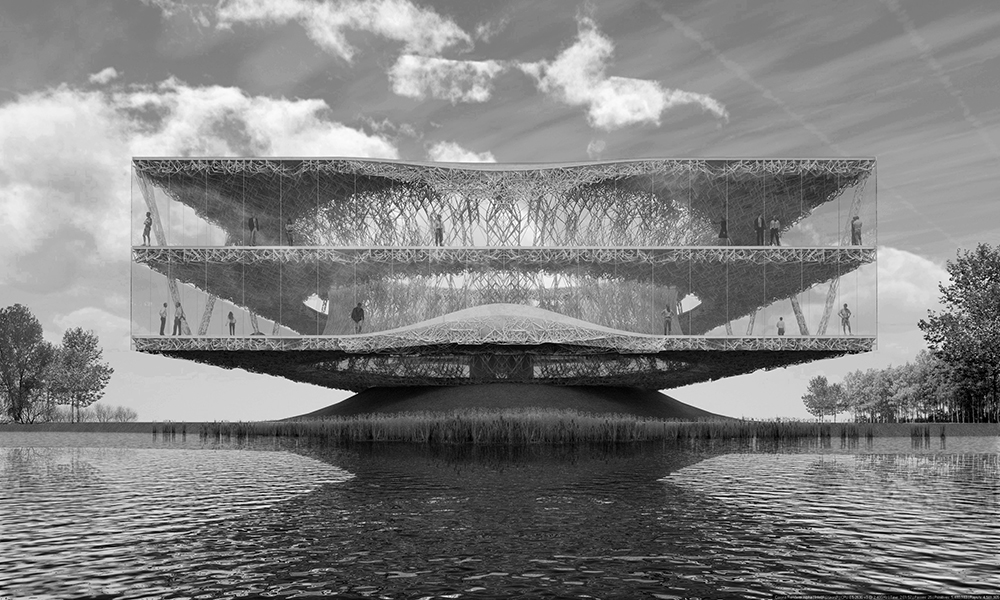
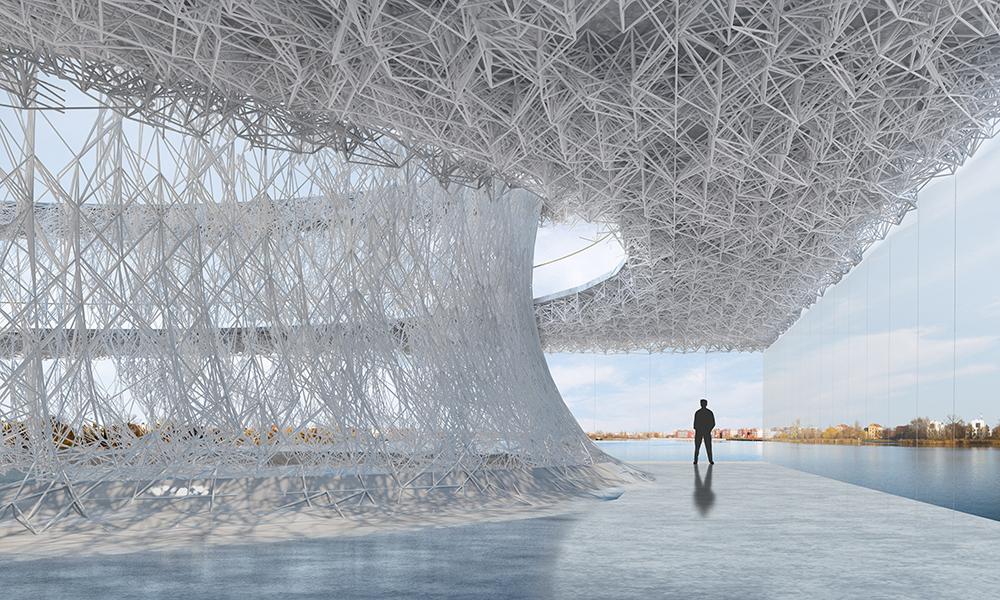

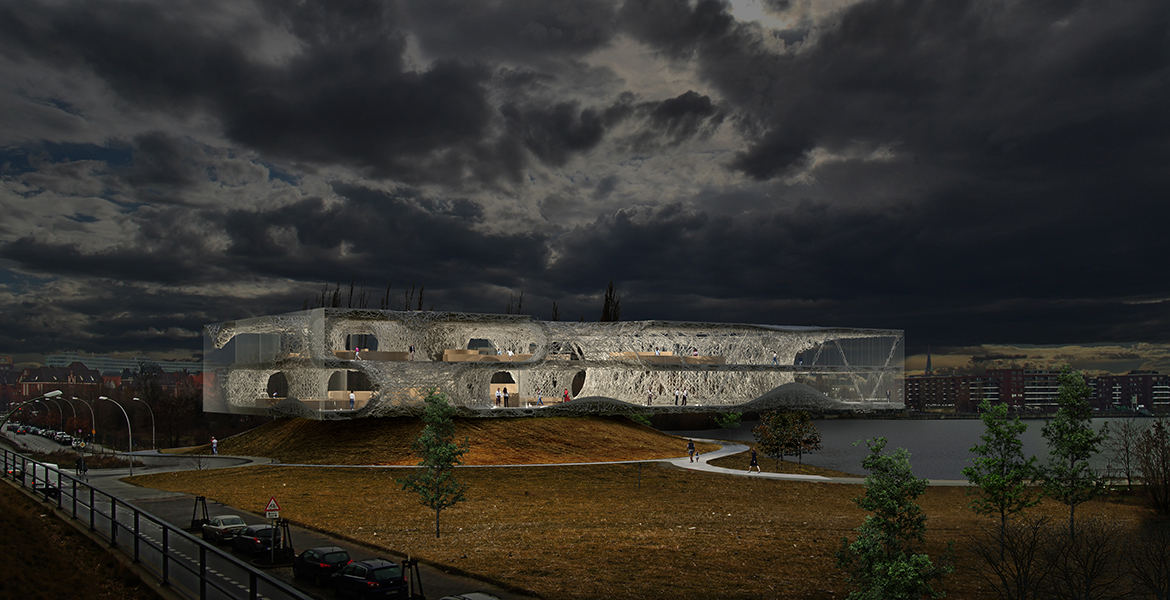
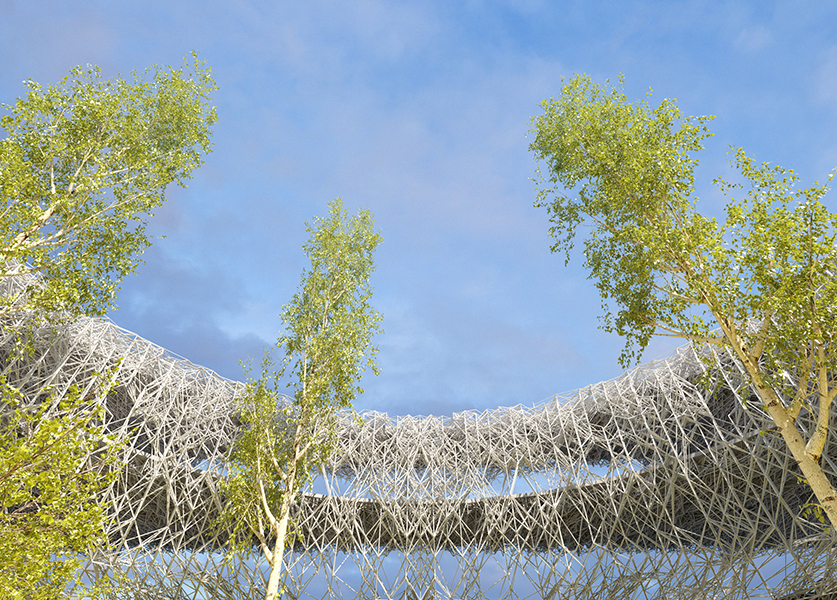
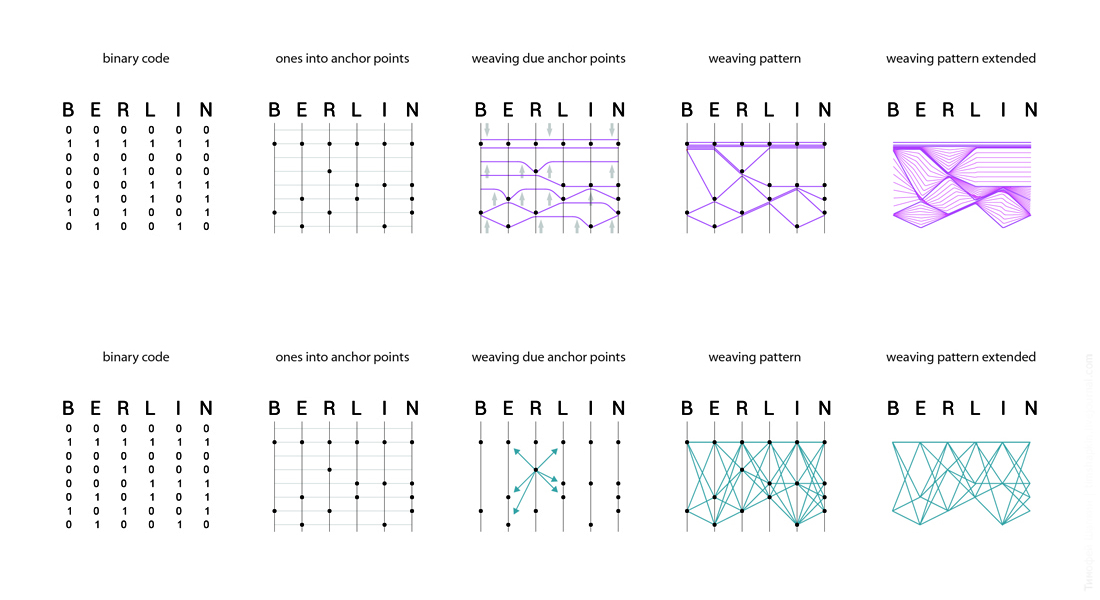
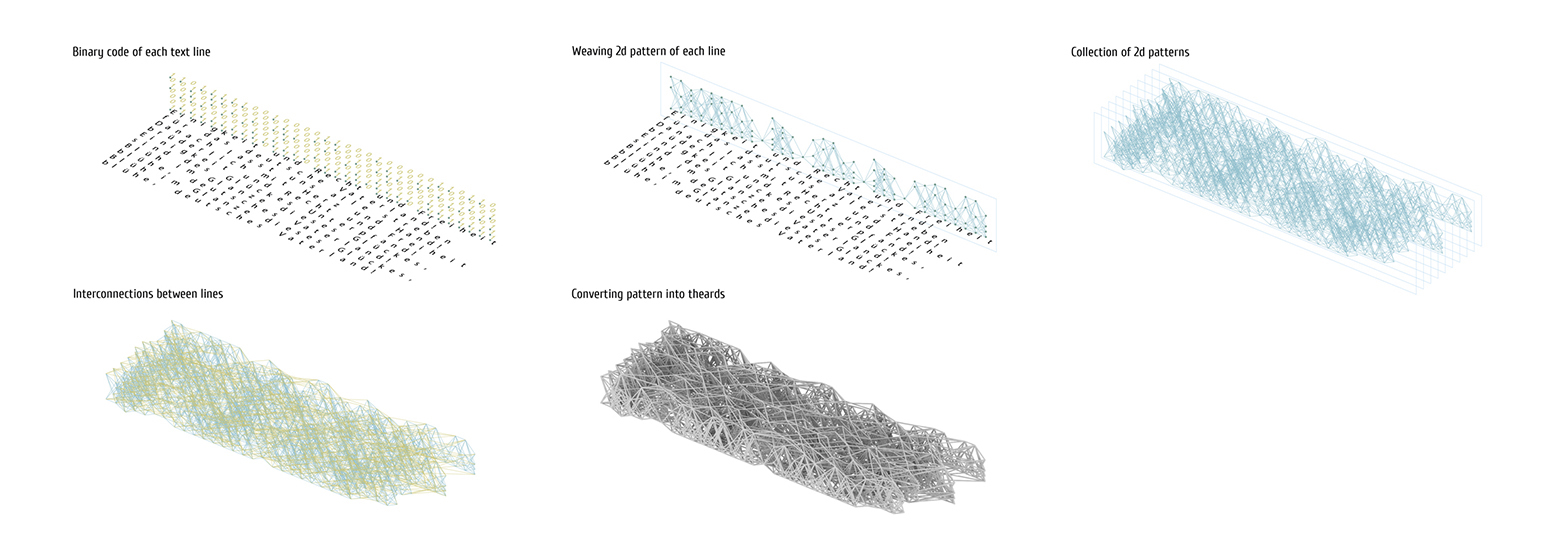
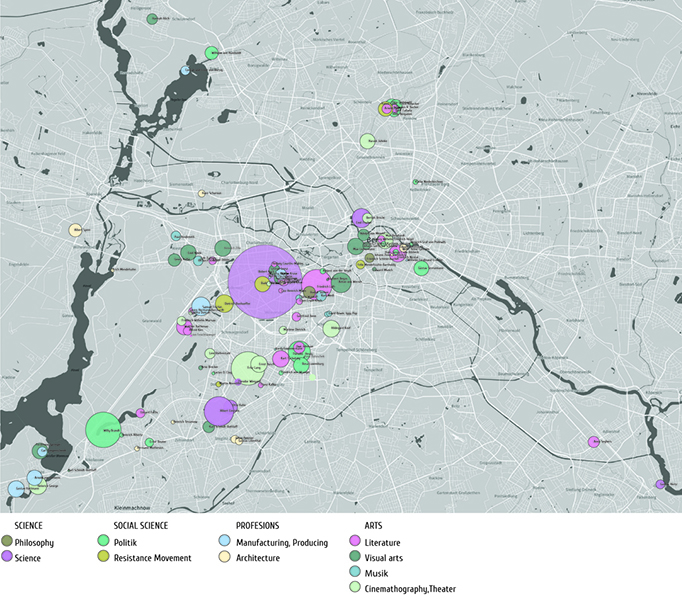
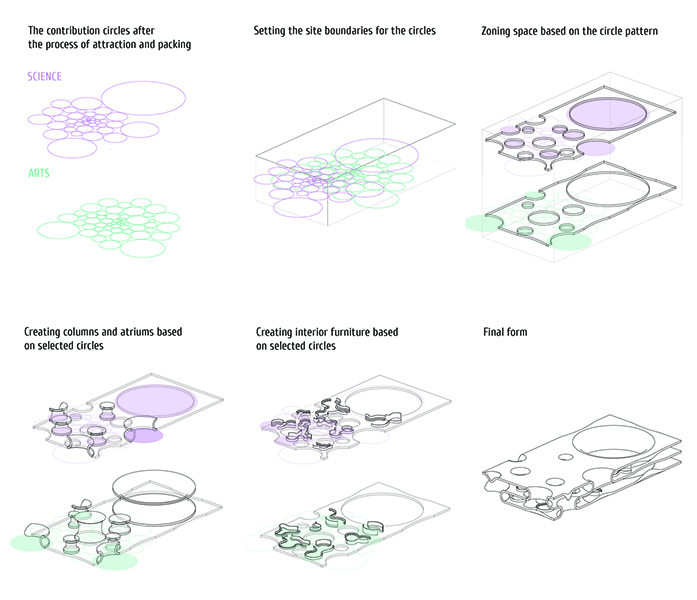
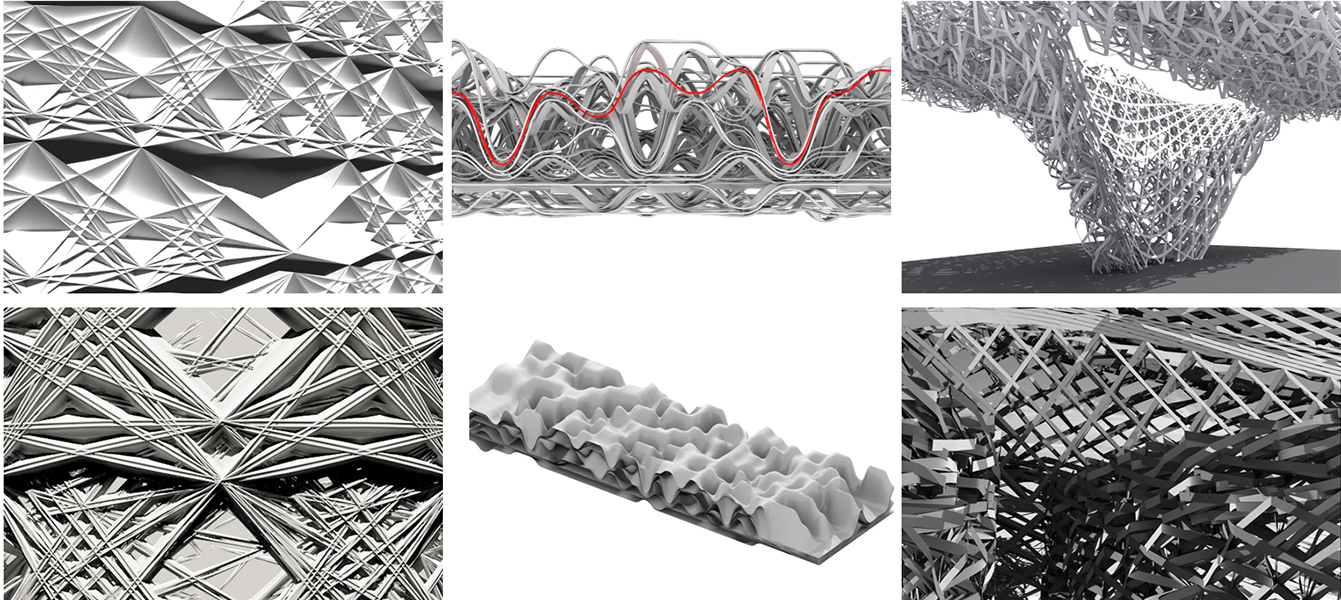

Digital library in Berlin as cultural code of the city
Year: 2014
Team: Tim Shapkin, Katarzyna Piś
The project started as a "weaving in architecture research". We tried to distinguish some advantages in the weaving approach:
-single piece of structure
-high strength to volume ratio
-space saving
-resourses saving
-low transportation cost
-editable properties (density, isotropy)
-beauty
We sought inspiration in nature. As shining example we took beaver damm and weaved bird nest. The material of animal dwellings is homogeneous and is taken nearby. The animals don't need any drawings for construction. They use set of simple rules programmed of nature. Nonetheless the given set is in the same time flexible and variable and the result is always non repeatable one in one. So, in the beginning of the research our purpose was to find our own set of simple rules capable to form the building.
From the human culture we found inspiration in two things connected with weaving. First one is Jaquard loom, the first programming device in history. As input data there were used punched cards allowed to control every single thread in the loom. Second one is the story related the Appolo moon program. Computational capacity in 60s of 20th century wasn't enough to maintan all the tasks during the space flight. Thence many of programms were literally weaved by hand of NASA collaborators. Yhey used copper wires and magnetic cores holding bits of information.
"the whole skeleton of the building consists from materialized data"
Then we started getting more familiar with weaving and knitting techniques. Obviously most of them exist in 2D space. 3D weaving or knitting are not developed cause of comolex technological issues of the implemetation. We tried to classify all the weaving methods in one table. Thus we discerned 4 groups of weaving: 2D, linear braiding (or closed 2D), pseudo 3D and finally 3D.
Three dimensional space allows to produce endless amount of 3D networks and weaving approaches. At this stage it is senceless look for an optimal structure because the whole thing depends on potentional 3d weaving technology. Lack of time forced us not to think about 3d weaving technology nor about searching of appropriate material, but focus only on semantic and visual component of the issue.
Apart from weaving we were engaged with general conception. We desired not to have only author's work but to have objectivity in the project. But the objectivity doesn't come from the environment of the site. We wanted to use some kind of data that could represent the whole city. So we decided to create digital library devoted to the most famous cultural figires of Berlin. Since then we looked for solutions to reflect the cultural code of the city.
During the process we compiled the list with more than 100 celebreties who had ever lived in Berlin. There were famous scientists, musicians, actors, policies and other professions. We gathered address and years of living information of each person. We needed to convert all this data in numbers that influence the morphology of the building. The numbers should represent the contribution of all participants. But how to calculate the cultural contribution weight? Or how can we even compare for instance contribution of musicians and chemists? Unresolved at first sight problem has been solved in simple way.
We developed our own methodic. As a basic number we took Google search results. We just entered the name of the personalities with the same settings and only in german segment of internet. The amount of founded results is our basic number. The more topics or references of the figure Google can find the more contribution weight he has. But not everyone from the list spend the whole life in Berlin. Marlene Dietrich for example has became famous after she left the city. On the contrary someone spend his productive years after moving to the capital. Therefore our methodic suppose the living factor calculations in addition. We multiplied the basic Google number with the factor and obtained the contribution weight of everyone in the list.
We've got interesting results. For example famous czech writer Franz Kafka lived in Berlin not more than one year. Despite of small "living factor" he collected more points than numerous indigenous citizens. Many important people such as manufacturers or philosophers have lost in points against to actors from cabaret. The greatest amount of contribution points has microbiologist Robert Koch. And this is not surprise because there are hundreds of schools in Germany and thousand of streets named after him.
Than we compiled cultural map of Berlin. Everyones living location holds corresponding contribution weight, which is represented by circle area. Via the cultural map we can define most favorable districs of berlin intellectuals: Mitte, Scharlottenburg, Zellendorf.
We devided the list in two groups: art and science. Then we launched attraction and packing alghorytm process for each group using Kangaroo add-on. Further formfinding was proceeded relating packed circels and rectangle site boundary. Resulting pattern was used as framework for zoning the inner space.
Final shape looks like layer-cake everted in certain places inside-out. Topologicaly all layers are composed by one isosurface. There are no common partitions or ceilings inside of the building. The volume is more like a set of communicating vessels.
But let's return to the subject of woven structure. As it was mentioned before that our work was mostly influenced by Jaquard loom and first prototypes of core memory. Punched cards are like predecessor of bunary code. The holes are ones and the place witout holes are zeros. Combination of one and zero makes final pattern of the product. We use the same approach in the project. Binary code works like cipher that converts text information into woven structure.
Thus the whole skeleton of the building cosists from materialized data. Scientific publications, monography, topics, literature work of famous berliners are coded within the woven structure and lets a lot of light inside.
